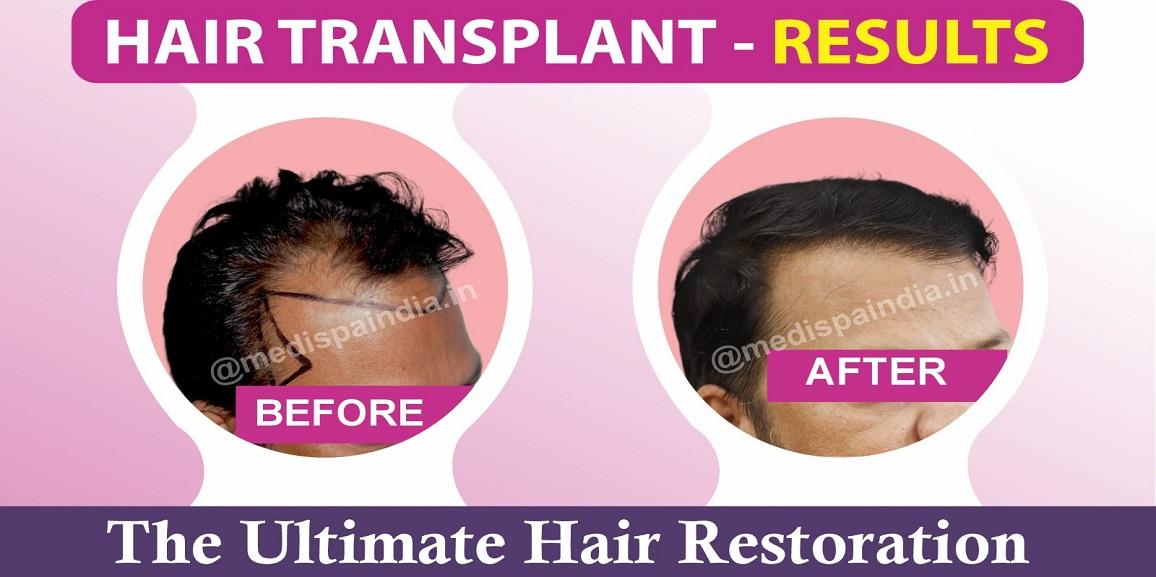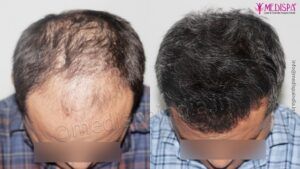
The field of hair transplant surgery has seen significant advancements, allowing pioneers in the industry to achieve high density hair transplants. The demand for high density hair transplants is on the rise, with the success of the procedure relying heavily on the skill and expertise of the surgeon. Achieving a natural look with high hair density is now a top priority in hair transplant surgery. While a typical hair transplant may result in 30-40 hair follicles per square centimeter, meeting the demand for high density hair transplants may require 60-70 hair follicles per square centimeter to achieve optimal results.
Hair transplantation is a type of outpatient cosmetic surgery that involves moving your own hair follicles from an area of the scalp that is resistant to DHT (dihydrotestosterone) to an area where you are experiencing baldness. In order for the procedure to be successful, it is necessary to have a sufficient density of hair in the donor area to adequately cover the bald scalp. If the hair density is not enough, it will not be possible to achieve the desired results with a hair transplant.
There is gaining significant attention in the field of hair transplant in Jaipur, as it has become a popular destination for individuals seeking this procedure. The Pink city is renowned for its highly skilled hair transplant surgeons, who have earned a global reputation for their expertise and adherence to high standards in performing hair transplants. Additionally, the hair transplant cost in Jaipur is quite affordable, thanks to the competitive nature of the industry in this bustling city. These factors have contributed to Jaipur’s emergence as a leading destination for hair transplant tourism.
Hair density and realization to undergo hair transplant
Individuals with a greater hair density may only become aware of hair loss once it reaches 30-50% of the scalp, as the remaining hair can effectively cover the balding areas. Conversely, those with lower hair density are more likely to notice hair loss early on, as the bald spots are more visible. The decrease in hair density corresponds to a more advanced stage of baldness, as classified by the Norwood scale.
Role of hair density
The significance of hair density in hair transplantation cannot be overstated. It serves as a crucial factor for the hair transplant surgeon in determining the viability of the procedure and the anticipated results. Various aspects of the hair transplant process, such as confirming the patient’s suitability, determining the number of grafts needed, selecting the technique for graft harvesting, deciding on the number of grafts to be extracted, and managing the patient’s expectations post-procedure, all hinge on hair density. The density of hair in the donor area plays a pivotal role in determining the number of grafts that can be feasibly extracted. A higher density in the donor area allows for the extraction of a greater number of grafts, resulting in a fuller appearance following the hair transplant. Conversely, lower hair density in the donor site may limit the availability of an adequate number of grafts, leading to suboptimal outcomes or a compromised aesthetic result.
How to get the high hair density results after the hair transplant?
To achieve “maximum hair density,” there are specific measures that need to be taken into consideration.
- Selecting a surgeon: One crucial aspect is selecting a surgeon who offers a lower rate of damage to the hair follicles. When the hair follicles are damaged extensively, it results in the loss of valuable hair follicles. This, in turn, leads to a hair transplant with lower density. By reducing the damage rate, it is possible to achieve higher hair density, but this can only be accomplished by skilled and experienced hands. Additionally, it is important to handle the grafts appropriately during their transfer to the graft separation room or during the implantation of the follicles. This helps minimize graft damage. Furthermore, every step of the hair transplant procedure should be performed under high magnification, which allows for the magnification of the tiny grafts by 20-200 times. This ensures the survival of the hair grafts.
- Combination technique preference: When dealing with cases of hair loss at grade VI or VII, it is important to consider the Combination technique for achieving the best hair density. Using either technique alone may not provide a sufficient number of grafts. Therefore, in cases where maximum density is required in a single session, a combination technique of FUT and FUE is recommended. The FUT technique can successfully yield 3000-3500 grafts, while the FUE technique can achieve approximately 2000-2500 grafts. By combining these techniques, more than 4000 follicular grafts can be successfully achieved in a single session. The Combination technique also offers the advantage of preserving follicular grafts for future sessions in cases of advanced baldness and progressive hair loss. Dr. Suneet Soni specializes in performing the Combination technique of FUT and FUE, as he is the pioneer of the bio-stimulated combination technique in Delhi and Jaipur.
- Clinic with spellbound facilities and infrastructure: It is crucial to select a clinic that offers excellent facilities and infrastructure. By utilizing the latest technology and innovative instruments during a hair transplant procedure, the surgeon’s skills are enhanced. Therefore, every step of the hair transplant should be executed with utmost care to achieve maximum hair density. Medispa hair transplant clinic consistently maintains a world-class operatory equipped with the best and latest technology instruments, along with German-based world-class microscopes to ensure improved efficiency.
- Choose the most skilled surgeon for increased hair density: Some underqualified surgeons may overquote the number of grafts in order to cover up their lack of expertise, resulting in damaged hair follicles. This can lead to future hair loss issues for the patient. In their pursuit of harvesting more grafts, these surgeons may resort to overharvesting and encroach upon the safe donor zone, causing a decrease in density at the donor area and inadequate coverage at the recipient area. Therefore, it is crucial to select a qualified, experienced, and expert surgeon to minimize damage to the follicular grafts and achieve maximum hair density during the transplant procedure.
Epilogue:
In conclusion, it is essential to carefully select the right hair transplant surgeon when considering undergoing a hair transplant procedure. For a high density hair transplant, it is advisable to seek an initial consultation to assess the feasibility of the procedure and ensure the desired results are achieved. Medispa hair transplant clinic is renowned for delivering optimal hair transplant outcomes and guarantees maximum hair density for patients. Dr. Suneet Soni, a highly skilled and experienced hair transplant surgeon, proficiently performs all hair transplant techniques with an impressive surgical success rate of less than 1%. If you are interested in a high density hair transplant, we recommend visiting Medispa clinics for expert advice and superior results.







